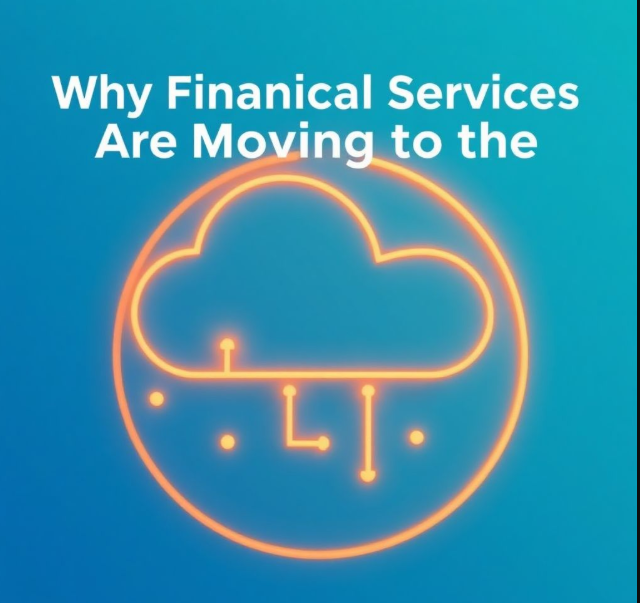Best Cloud Why Financial Services Are Moving to in 2025.
Financial services firms are moving to the cloud at record speed. Facing mounting regulatory demands, razor-thin margins, and a rapid shift in customer expectations, banks, insurers, and fintechs are under pressure to adapt. The global momentum is clear—cloud adoption now shapes everything from mobile banking to fraud protection. This shift directly impacts how trusted your institution is, how easy it is to launch new products, and how quickly you can meet customer needs. Understanding what drives this move is important for anyone serious about finance.
Key Drivers: Why Financial Services Are Embracing the Cloud
Operational Agility and Cost Efficiency

Legacy IT systems have always been heavy and slow. Moving to the cloud cuts those burdens, letting financial firms scale resources up or down in real time. No more betting big on expensive hardware or data centers that may sit idle for months. Instead, cloud platforms turn heavy upfront costs into flexible, pay-as-you-go expenses. That means even small banks can pivot quickly, handle spikes in transactions, or launch digital services without major setbacks.
Outsourcing infrastructure also frees up IT teams to focus on priority projects. Automated updates, instant resource deployment, and on-demand storage support new growth without ballooning costs or delaying time-to-market. With cloud, a small team can do what once took hundreds of people and millions of dollars.
Advanced Security and Regulatory Compliance
Security worries have long slowed down cloud adoption in finance. But today, cloud providers build in robust protections like encryption by default, real-time monitoring, and identity controls. Zero Trust Architecture (ZTA) and confidential computing guard sensitive data, making it harder for bad actors to get in.
Regulation is stricter than ever. Cloud solutions now offer compliance-as-code, constantly checking systems for risky settings or unauthorized access. These tools help banks meet global standards—GDPR, DORA, and others—without drowning in paperwork. Firms also benefit from shared security models, combining their own best practices with those of Amazon, Microsoft, or Google.
AI, Automation, and Competitive Innovation
Cloud’s real superpower is speed. Financial institutions can now harness real-time analytics, AI, and automation to improve everything from loan approvals to fraud detection. Cloud-native platforms let teams test, launch, and refine products faster than ever before.
AI-driven workflows crunch customer data and create personalized experiences—think tailored offers or investment advice that adapts in seconds. Risk management and compliance use automation to spot suspicious patterns and flag issues before they spread. This keeps services sharp, relevant, and secure even as threats and customer needs evolve.
Recent Developments and Future Trends in Cloud Adoption for Financial Services
The pace of new technology is relentless. Financial firms now use tailored industry clouds, blending private and public solutions (hybrid cloud) to meet strict rules and performance needs. Cloud-powered insights, embedded finance, and blockchain are quietly changing how we bank and invest.
Industry-Specific and Hybrid Cloud Strategies
Many financial service companies now prefer industry-specific clouds. Major providers—AWS, Microsoft Azure, and Google Cloud—offer banking-ready environments that meet compliance, security, and data needs out of the box. These industry clouds support:
- Critical workload migration: Moving complex apps and data with less risk.
- Purpose-built solutions: Tools designed for underwriting, payments, or compliance.
- Edge computing: Processing data closer to the source for real-time results.
- Hybrid models: Combining private and public clouds for better control and resilience.
Multi-cloud strategies add a safety net. If one provider goes down or hikes prices, firms can quickly shift to another.
Security, Data Privacy, and Regulatory Technology (RegTech) Innovations
Security and compliance are evolving every year. Confidential computing now protects data even during use, not just at rest or in transit. AI-driven monitoring scans for threats or suspicious activity, learning from every incident.
RegTech tools automate updates and audits. They track policy changes and regulatory shifts, closing gaps before regulators notice. Data-tight controls—masking, tokenization, and sovereign cloud deployments—help global banks respect local privacy laws.
The Expanding Role of AI, Blockchain, and Embedded Finance
Cloud is fueling a new wave of innovation across banking:
- Agentic AI systems: Smart bots that manage compliance, analyze risk, and suggest investments.
- Blockchain and tokenization: Secure digital assets, smart contracts, and real-time settlements.
- Intelligent automation: Quicker policy reviews, underwriting, and claims processing.
- Embedded finance: Banking services embedded into non-bank apps—ride-share payments, instant loans at checkout, insurance wrapped into e-commerce.
These new models create fresh revenue streams, reduce friction, and make finance part of daily life.
Conclusion
Cloud adoption is reshaping financial services from top to bottom. Banks and fintechs that move now gain big advantages: they cut costs, boost security, speed up launches, and improve customer trust. New tech—from AI risk models to embedded finance—won’t wait for laggards. Organizations that want to compete and stay compliant must make smart use of cloud innovation today. The future of finance is flexible, secure, and built on the cloud.
